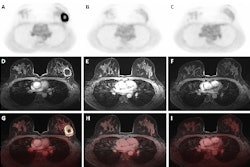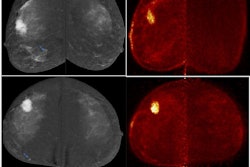More in Home
Brain MRI radiomics help predict poor newborn neurodevelopment
December 11, 2023
Researchers build an MRI machine in just 4 days
December 11, 2023
Swedish group issues upbeat report on mammography AI model
December 11, 2023
Philips'-managed CT consortium receives CAD grant
December 8, 2023
Total-body PET imaging hub launched
December 7, 2023
Video from RSNA 2023: Radiology AI in U.S. vs. Europe
December 7, 2023
Affidea announces acquisitions in Spain and Romania
December 6, 2023
Don't get burned: Expert tips and tricks on MRI safety
December 6, 2023
Top 10 most feared diagnostic errors by radiology trainees
December 5, 2023
Momentum gathers behind contrast-enhanced mammography
December 4, 2023





















